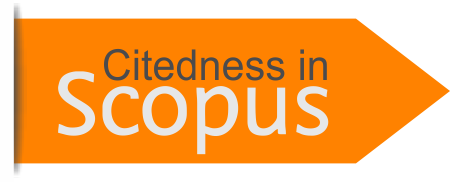Effectiveness of the OSSRBA (Online Single Submission Risk Based Approach) System in Business Licensing Services in Payakumbuh City DPMPTSP
DOI:
https://doi.org/10.69989/87y17s52Keywords:
E-Government, Licensing Services, OSS RBA, Payakumbuh CityAbstract
OSS RBA is a digital-based application that is used as a means of issuing licensing documents for community business activities. The problem behind this research is that the OSS RBA system cannot be implemented optimally due to limitations in both the application, service providers, and the public when using OSS RBA. Research objective: to determine the effectiveness of the RBA OSS system in business licensing services at the Payakumbuh City Investment and One-Stop Integrated Services Service. Research method: descriptive with a qualitative approach. Using the theory of e-government effectiveness by Timothy Dolan, namely the Six-Dimensional Assessment Tool (6 DAT), Results/Findings: The results of this research indicate that the OSS RBA system in Payakumbuh City is still not effective. Several indicators have been met, such as a good security system, an integrated database, and application updates. However, there are still shortcomings that can be seen from the limited means of communication, lack of information regarding coordination between parties involved in the OSS RBA, low understanding of technical OPD regarding the verification process, interactivity that is still limited, the performance of government licensing services that is not yet visible, and public feedback in providing assessments on the licensing process for the OSS RBA system that is not yet available. This causes the use of the OSS RBA system in society to be not optimal, so the OSS RBA system is still at a transition stage from the old method to the new method.
Downloads
References
Alharbi, A. S., Halikias, G., Rajarajan, M., & Yamin, M. (2021). A review of effectiveness of Saudi E-government data security management. International Journal of Information Technology, 13, 573–579.
Ariana, S., Azim, C., & Antoni, D. (2020). Clustering of ICT human resources capacity in the implementation of E-government in expansion area: a case study from pali regency. Cogent Business & Management, 7(1), 1754103.
Ashaye, O. R., & Irani, Z. (2019). The role of stakeholders in the effective use of e-government resources in public services. International Journal of Information Management, 49, 253–270.
Bag, S., & Pretorius, J. H. C. (2022). Relationships between industry 4.0, sustainable manufacturing and circular economy: proposal of a research framework. International Journal of Organizational Analysis, 30(4), 864–898.
Brown, E., & Piroska, D. (2022). Governing fintech and fintech as governance: The regulatory sandbox, riskwashing, and disruptive social classification. New Political Economy, 27(1), 19–32.
Chohan, S. R., Hu, G., Si, W., & Pasha, A. T. (2020). Synthesizing e-government maturity model: a public value paradigm towards digital Pakistan. Transforming Government: People, Process and Policy, 14(3), 495–522.
de Bruijn, H., & Janssen, M. (2017). Building cybersecurity awareness: The need for evidence-based framing strategies. Government Information Quarterly, 34(1), 1–7.
Diesch, R., Pfaff, M., & Krcmar, H. (2020). A comprehensive model of information security factors for decision-makers. Computers & Security, 92, 101747.
Ferrag, M. A., Maglaras, L., Moschoyiannis, S., & Janicke, H. (2020). Deep learning for cyber security intrusion detection: Approaches, datasets, and comparative study. Journal of Information Security and Applications, 50, 102419.
Freeman, E., Woodruff, S. D., Worley, S. J., Lubker, S. J., Kent, E. C., Angel, W. E., Berry, D. I., Brohan, P., Eastman, R., & Gates, L. (2017). ICOADS Release 3.0: a major update to the historical marine climate record. International Journal of Climatology, 37(5), 2211–2232.
Greenhalgh, T., Jackson, C., Shaw, S., & Janamian, T. (2016). Achieving research impact through co‐creation in community‐based health services: literature review and case study. The Milbank Quarterly, 94(2), 392–429.
Guhr, N., Lebek, B., & Breitner, M. H. (2019). The impact of leadership on employees’ intended information security behaviour: An examination of the full‐range leadership theory. Information Systems Journal, 29(2), 340–362.
Haileyesus, I. W. (2021). An appraisal of electronic signature law of Ethiopia: further reforms for improvement. International Journal of Public Law and Policy, 7(1), 49–73.
Hosseini, M., Shahri, A., Phalp, K., & Ali, R. (2018). Four reference models for transparency requirements in information systems. Requirements Engineering, 23, 251–275.
Koirala, B. P., Koliou, E., Friege, J., Hakvoort, R. A., & Herder, P. M. (2016). Energetic communities for community energy: A review of key issues and trends shaping integrated community energy systems. Renewable and Sustainable Energy Reviews, 56, 722–744.
Lehr, W., Queder, F., & Haucap, J. (2021). 5G: A new future for Mobile Network Operators, or not? Telecommunications Policy, 45(3), 102086.
Li, Y., & Shang, H. (2023). How does e-government use affect citizens’ trust in government? Empirical evidence from China. Information & Management, 60(7), 103844.
Ma, Z., Ren, Y., Xiang, X., & Turk, Z. (2020). Data-driven decision-making for equipment maintenance. Automation in Construction, 112, 103103.
Mishra, S., Alowaidi, M. A., & Sharma, S. K. (2021). Impact of security standards and policies on the credibility of e-government. Journal of Ambient Intelligence and Humanized Computing, 1–12.
Nicho, M. (2018). A process model for implementing information systems security governance. Information & Computer Security, 26(1), 10–38.
Nyland, K., Morland, C., & Burns, J. (2017). The interplay of managerial and non-managerial controls, institutional work, and the coordination of laterally dependent hospital activities. Qualitative Research in Accounting & Management, 14(4), 467–495.
Ocampo, L., Alinsub, J., Casul, R. A., Enquig, G., Luar, M., Panuncillon, N., Bongo, M., & Ocampo, C. O. (2019). Public service quality evaluation with SERVQUAL and AHP-TOPSIS: A case of Philippine government agencies. Socio-Economic Planning Sciences, 68, 100604.
Osborne, S. P. (2018). From public service-dominant logic to public service logic: are public service organizations capable of co-production and value co-creation? In Public Management Review. Taylor &Francis. https://doi.org/10.1080/14719037.2017.1350461
Ramtohul, A., & Soyjaudah, K. M. S. (2016). Information security governance for e-services in southern African developing countries e-Government projects. Journal of Science & Technology Policy Management, 7(1), 26–42.
Ritz, A., Brewer, G. A., & Neumann, O. (2016). Public service motivation: A systematic literature review and outlook. Public Administration Review. https://doi.org/10.1111/puar.12505
Sá, F., Rocha, Á., & Cota, M. P. (2016). Potential dimensions for a local e-Government services quality model. Telematics and Informatics, 33(2), 270–276.
Sofyani, H., Riyadh, H. A., & Fahlevi, H. (2020). Improving service quality, accountability and transparency of local government: The intervening role of information technology governance. Cogent Business & Management, 7(1), 1735690.
Vassli, L. T., & Farshchian, B. A. (2018). Acceptance of health-related ICT among elderly people living in the community: A systematic review of qualitative evidence. International Journal of Human–Computer Interaction, 34(2), 99–116.
Downloads
Published
Issue
Section
License
Copyright (c) 2023 Anisa Zahara, Muhammad Ichsan Kabullah, Roni Ekha Putra (Author)

This work is licensed under a Creative Commons Attribution-ShareAlike 4.0 International License.
Copyright Notice
An author who publishes in the journal "Jurnal Ilmiah Ekotrans & Erudisi" agrees to the following terms:
Author retains the copyright and grants the journal the right of first publication of the work simultaneously licensed under the Creative Commons Attribution-ShareAlike 4.0 License that allows others to share the work with an acknowledgement of the work's authorship and initial publication in this journal
Author is able to enter into separate, additional contractual arrangements for the non-exclusive distribution of the journal's published version of the work (e.g., post it to an institutional repository or publish it in a book) with the acknowledgement of its initial publication in this journal.
Author is permitted and encouraged to post his/her work online (e.g., in institutional repositories or on their website) prior to and during the submission process, as it can lead to productive exchanges, as well as earlier and greater citation of the published work (See The Effect of Open Access).
All materials in this site are protected by the law. It is prohibited to quote a part of or all of this website contents for commercial purposes without the permission or consent of the editors.
If anyone finds one article or more in this journal violate or potentially violate one’s copyrights, please report to us through e-mail of Principle Contact.
Legal-formal aspects of accessing any information and manuscript in this journal website refer to the provision of license Creative Commons Attribution-Share Alike (CC BY-SA). Read more about the Creative Commons Attribution-ShareAlike 4.0 Licence here: https://creativecommons.org/licenses/by-sa/4.0/.
All information available in 'Jurnal Ilmiah Ekotrans & Erudisi' is academic in nature. 'Jurnal Ilmiah Ekotrans & Erudisi' is not responsible for loss due to the abuse of information in the website.
Information
Notice about change in the copyright policy of the journal 'Jurnal Ilmiah Ekotrans & Erudisi' : "From Volume 1, Nomor 1 onwards the copyright of the article published in the journal 'Jurnal Ilmiah Ekotrans & Erudisi' will be retained by the author"
Privacy Statement
The names and email addresses entered in this journal site will be used exclusively for the stated purposes of this journal and will not be made available for any other purpose or to any other party.




































